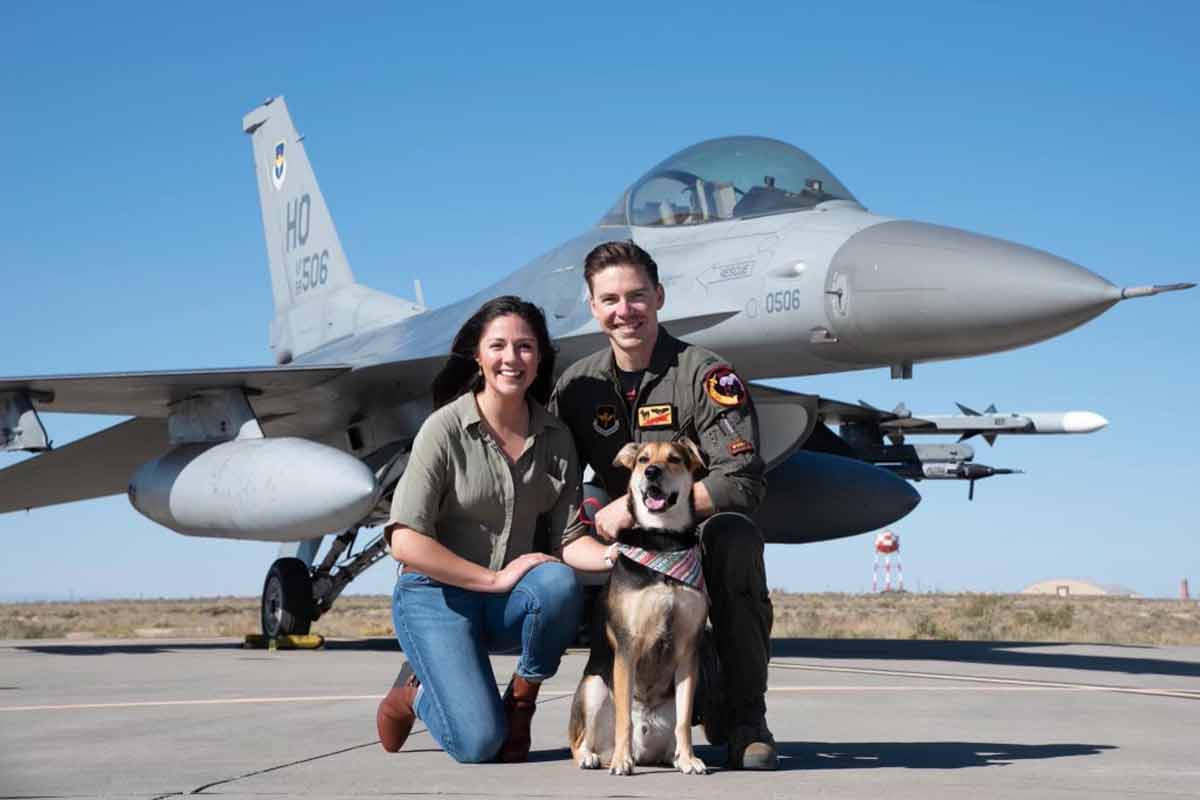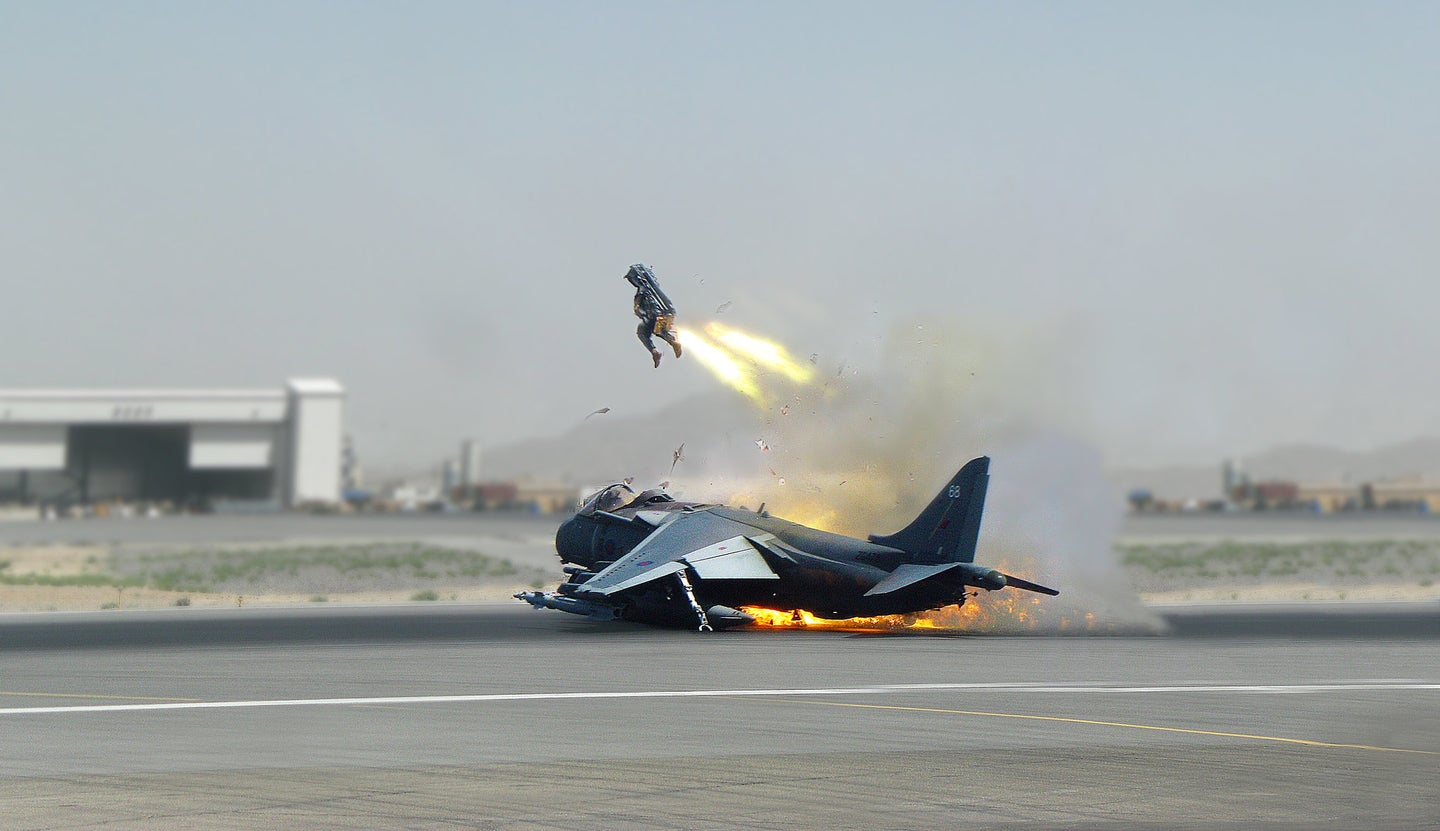Ejecting From A Fighter Jet - When things go wrong in a military aircraft, the pilot's last resort is the equipment he sits in: the seat. And it cannot fail, ever.
The 200-pound ejection seat, with its 3,500 or more components, is a remarkable piece of technology that not only pulls pilots out of a crashing plane, but also ensures that they survive the experience more or less unscathed. If the pilot ejects above 16,400 feet where oxygen is low, sensors in the chair will let it free fall to get the passenger airborne as quickly as possible before opening the parachute.
Ejecting From A Fighter Jet

British company Martin-Baker and Safran's French partner Martin-Baker France control 56% of the global ejection seat market. Their headquarters equips the aircraft of 93 air forces around the world, including the US F-35 Joint Strike Fighter, the French Rafale and the Eurofighter. Other major manufacturers of ejection seats are the American company Collins Aerospace (whose newest seat is the ACES 5) and the Russian companies NPP Zvezda and AO. In total, ejection seats have saved an estimated 12 to 13,000 lives since the mid-1940s.
Watch: Pilot Ejects Seconds Before Plane Crash, Reddit Users Can't Believe It
When the pilot pulls the yellow and black handle on the seat at knee level, it sets off an amazing chain reaction that begins with three explosions in very quick succession. Seats designed 30 years earlier had only one ballistic blast, the force of which crushed the pilot with 20 Gs or more (that's 20 times your body weight pushing you down). Today, launchers would "only" experience 18 Gs - still a huge force that would make anyone pass out if sustained. (Pilots flying fighter jets must deal with high G-forces while maneuvering, even when not ejecting.)
Pulling the handle activates the ejector gun for 0.2 seconds, launching the ejector at 50-55 feet per second. At the same time, the glass canopy of the plane either breaks, inflates, or is pierced by the seat, depending on the model of the plane. The rocket motor then fires for 0.2 seconds at 5,000 pounds of thrust, and then the topside rocket fires for 0.05 seconds at 584 pounds of thrust. This side rocket (located to the left of the front seat and to the right of the rear for two-crew aircraft) ensures that the two ejectors are ejected in different directions and the person in the back seat is always ejected first, to prevent the rocket from burning the front seat.
Straps tighten around the pilot's arms and legs and an emergency oxygen supply is released. Then the 214-pound seatback parachute deploys. At the same time two small panels about 16 inches long and 8 inches wide open on either side of the seat to keep it flat. And all this is done in 1.35 seconds!
Then the small box above the seat, which contains the main parachute (attached to the pilot) is lifted from the seat, the brake line drops and, as the main parachute opens, the pilot and the seat shell section - out from the section under the stock containing the survival kit and a raft that automatically inflates in the water. They hang below the launcher and activate just 5.5 seconds after pulling the launcher lever.
Ejection Seat Hi Res Stock Photography And Images
In addition, Mk16 seats designed specifically for the F-35 Joint Strike Fighter program feature a three-part airbag system known as a door protection device (NPD). Steve Roberts, head of business development at Martin-Baker, says the new helmet displays worn by F-35 pilots are larger and heavier than previous ones, and their center of gravity is forward of the axis of the head - factors that increase the risk neck injuries during extrusion.
To combat this, two side airbags inflate immediately after the ejection handle is pulled to prevent the head from moving sideways. A third airbag, located just behind the helmet, then inflates. "The combination of the three air spokes act as a 'throw glove' that supports the helmeted head to reduce inertial loads on the neck," says Roberts. When the main parachute deploys, these bags deflate automatically. In addition, this seat features automatic hand grips, rather than the passive ones found on previous ejection seats, to prevent the pilot's hands from inflating during ejection.
The F-35's Mk16 seat also has a "crew light switch" that the company added when tests showed that lightweight pilots wearing the new, heavier helmets had little risk of breaking their necks during ejection. “One of the first things a pilot will see when they get on the deck is a switch that shows 'normal' or 'light.' If they're in the 'light' category, they choose this and it adds a few bits to the launch, but means they'll have a slightly softer ride than the aeroplane," says a Martin-Baker spokesperson.

Ejecting up to 65,000 feet from a plane flying at 700 mph is a violent process. Despite the advances in technology over the decades, you're basically sitting in a small chair ejected from a malfunctioning craft, the chute opens, you and your party for a seat, and you land—hard. Legs can be broken, vertebrae can be compressed.
Us Naval Aviator Explains When A Military Pilot Must Absolutely, Undoubtedly, Certainly, And Unquestionably Eject From His Aircraft
"It was uncomfortable," says one castaway dryly. He was in the back seat of the plane when it collided with the bird in June 1999. "The canopy blew off and there was blood and storm everywhere," he recounts. “I didn't realize it was a bird - I thought it was a pilot and when I looked ahead it wasn't there so I jumped. I broke five vertebrae and thus lost a few centimeters – he says ironically. Actually, the pilot was there, he just bent over and checked for damage and later managed to land the plane.
The other pilot, Paul Defoucaud, was 23 when he had to eject. "I wasn't stressed at all, I remember being super transparent," she says.
But a trainee pilot who had to eject after his plane hit a large bird says: “You're completely out of control when you eject and fall very quickly. I was sure I had broken something."
Another encounter with the bird caused Commander Matthew (the French armed forces require that surnames not be given for those still on active duty) eject from his Mirage 2000-5. “The only thing I lost was my shoe,” he says, “but the decision to leave the plane is not taken lightly. I felt like I failed - he says.
Here's Why Usaf F 4 Crew Members Who Ejected Two Times From A Phantom Ii Were Grounded And Never Flew An F 4 Again
Pilots are reluctant to pull the seat ejection lever because "we know we're condemning multimillion-dollar equipment, paid for with taxpayer money," Matthew adds.
Ejectors whose lives are saved by Martin-Baker seats automatically become members of the Ejection Tie Club. At a commissioning ceremony during the Paris Air Show in June, French Air Force Captains Charles and Mikaël, who ejected on September 28, 2017, from the Mirage 2000N just 200 feet off the ground, said
That "they both pulled the handle at the same time." Mikaël, who suffered a triple leg fracture, says that “when you kick out, the right side of the brain just takes over and the adrenaline kicks in. My first thought when I landed was to see my children again."

Very few double launch. Former French Air Force pilot José-Manuel Souvignet is one of them. First catapulted as a lieutenant in 1995. “My Mirage 2000 was shot down by the Serbs over Bosnia. We jumped at an altitude of 3,000 meters and 350 knots with our aircraft on fire. We both fell and broke our legs on hostile ground. We were closed for 104 days,” he says, declining to elaborate.
Swiss Air Force Mcdonnell Douglas F/a 18c Hornet Multirole Fighter Aircraft Ejecting Flares Editorial Stock Image
The second time was in 2008, when he was a lieutenant colonel. “I was flying the Mirage 2000N when the fuel cut out... I drove it into the neutral zone and we took off at 200 feet and 190 knots. The force of the landing was like falling from the fourth floor of a building."
Christina Mackenzie has been a journalist for more decades than she cares to count. He began writing military technology stories in 2019 after more than 20 years covering the European defense and aerospace industry. He lives about 50 miles south of Paris with his wife in a house that seems a little too big now that their four children have flown the nest.
Second degree assault washington state, 2nd degree assault sentence, 2nd degree aggravated assault, 2nd degree assault mn, 2nd degree assault, 2nd degree assault definition, 3rd degree assault washington state, 4th degree assault washington state, 2nd degree felony assault, 4th degree assault washington, what is assault 2nd degree, 2nd degree assault charges
/s3.amazonaws.com/arc-authors/gray/5c3bb119-20b3-4cdb-958c-e550c76ff361.jpg)